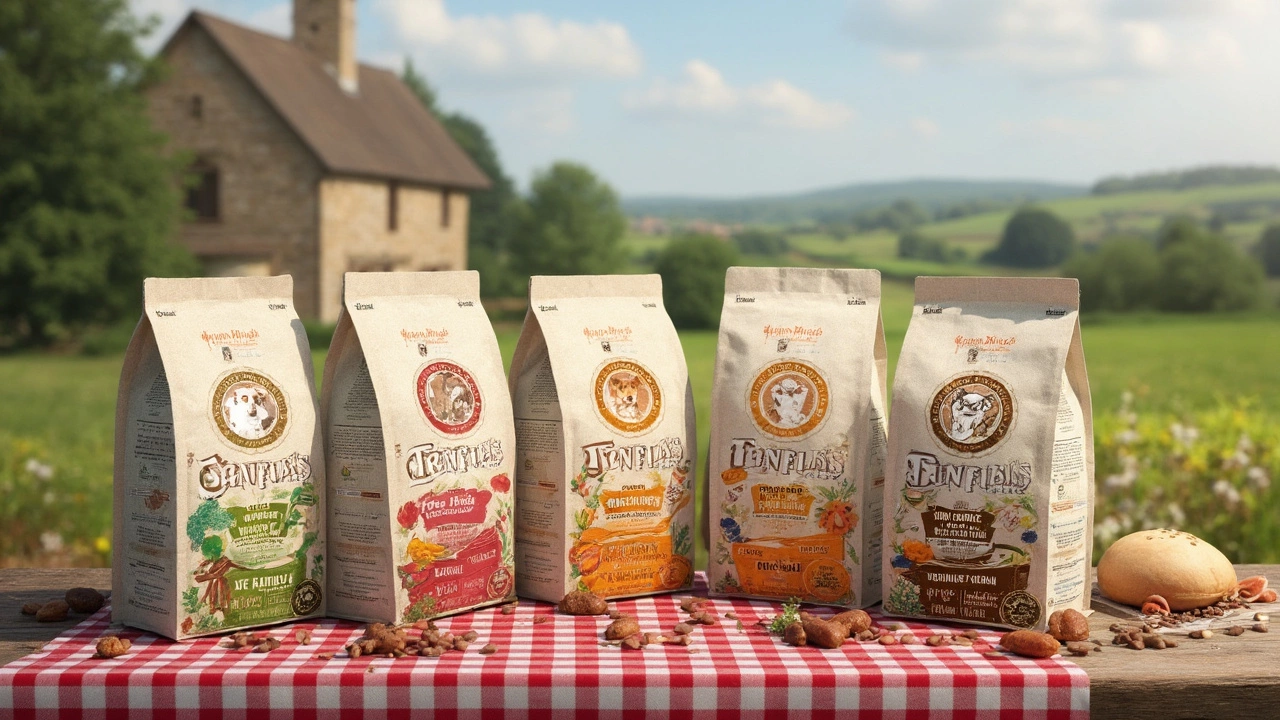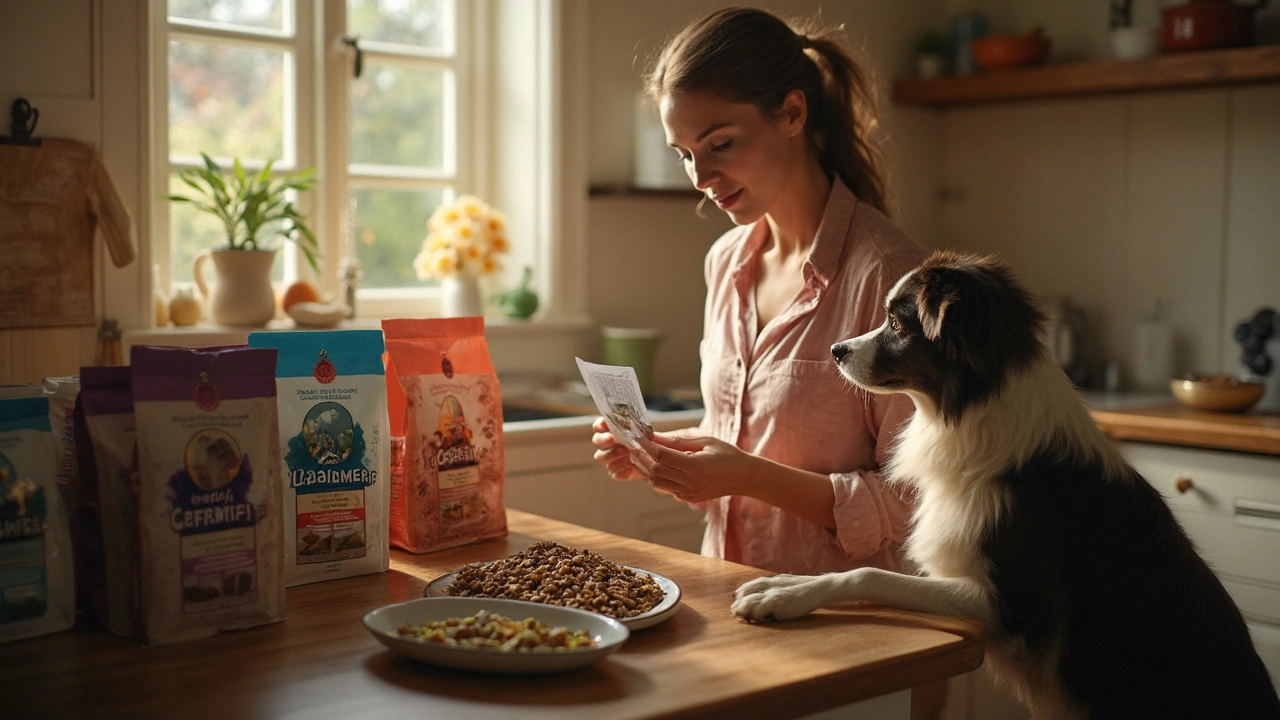Venturing into the world of dog food can feel like diving into an endless ocean of options, and who’s got time for that, right? But, feeding your furry buddy the right food is like giving them a ticket to a longer, happier life. So, let’s crack the code on finding the healthiest dog food out there.
First off, understanding your dog's nutritional needs is where it’s at. Much like us humans, dogs need a balanced diet, but that balance looks a bit different for them. Protein is the star player—think chicken, beef, or fish. But they also need carbs, fats, vitamins, and minerals to keep that tail wagging strong.
- Understanding Nutritional Needs
- Decoding Dog Food Labels
- Comparing Different Types of Dog Food
- Tips for Choosing the Best Food
Understanding Nutritional Needs
Dogs, much like people, thrive on a balanced diet. It's not just about filling their bowls; it’s about making sure what's inside is good for them. The backbone of any healthy dog food is an ample supply of protein. This is because dogs are natural carnivores, and proteins like chicken, beef, and fish provide the essential amino acids they need to build and repair tissues.
But wait, there's more! Dogs also need the right amount of fats, which are a great energy source. They help absorb vitamins and maintain healthy skin. Look for dog foods with chicken fat or fish oil—these are solid options. Carbs shouldn't be shrugged off either; they give your dog the energy to run, jump, and fetch like a champ. Ingredients like brown rice, oats, or sweet potatoes are great sources.
Let's not forget about vitamins and minerals—they’re like tiny superheroes protecting your dog from illnesses. Vitamins A, D, E, and K, along with minerals such as calcium and phosphorus, play roles in bone health, immune support, and more.
Checking labels can feel like decoding alien language, but there are some simple guidelines: make sure meat (or a specific meat meal) is the first ingredient listed. And be wary of fillers like corn and soy which don’t do much good for your pup.
- Proteins: Crucial for muscle and tissue health.
- Fats: Provide energy and aid vitamin absorption.
- Carbohydrates: Essential for quick energy.
- Vitamins and Minerals: Support overall health and wellness.
So, when you're out shopping for dog food, keep your pup's nutritional needs in mind. A little attention to these details can lead to big health dividends down the road!

Decoding Dog Food Labels
Alright, so you're standing in the pet food aisle, staring at a bunch of labels like they're written in some secret doggy code. Don't worry; let's break it down. Knowing how to read dog food labels can make picking the best dog food a whole lot easier.
First things first, check the ingredients list. Ingredients are listed by weight, with the heaviest first. So if meat is at the top, that's solid. But be cautious—sometimes, it'll say chicken, but they really mean chicken meal or by-products. Look for specific proteins like chicken, beef, or salmon. Avoid generic terms like 'meat meal' because who knows what's in there?
Next up is the guaranteed analysis. This is where you'll see the percentages of protein, fat, fiber, and moisture content. A good rule of thumb is a higher protein content with moderate fat and low fiber. Be on the lookout for added vitamins and minerals—stuff like omega fatty acids, which are awesome for skin and coat health.
Labels will often boast about being 'grain-free' or 'organic,' but what does that really mean? Grain-free doesn't always translate to healthier, unless your pup's got allergies. And even if it says 'organic,' it's worth checking for certification logos that back it up.
- AAFCO Statement: Look for the Association of American Feed Control Officials' (AAFCO) statement. If it says the food is formulated to meet AAFCO standards, that's a green light for balanced nutrition.
- Calories: Check the calories per serving. It's worthwhile, especially if you own a chunky buddy who could use a bit of a diet plan.
| Ingredient | Must Haves | Avoid |
|---|---|---|
| Proteins | Named meats like chicken, beef | Meat meal, by-products |
| Fats | Oils like salmon oil | Unspecified 'animal fat' |
| Grains | Whole grains like brown rice | Corn, wheat filler |
And here’s a quick tip: rotate brands every few months. It not only keeps your dog from getting bored but also helps cover any nutritional gaps. Being savvy with dog nutrition doesn’t need to be overwhelming, just keep these points in mind next time you grab a bag, and you’ll be good to go!

Comparing Different Types of Dog Food
Alright, so it’s time to talk about the array of options you’ve got when it comes to dog food. You’re not alone if you feel a tad overwhelmed. Let’s break it down in a way that makes sense.
First up, we’ve got dry kibble. Most common and usually budget-friendly, kibble is easy to store and helps with dental health by keeping tartar at bay. Look out for high-quality dog food brands that use whole proteins like chicken, lamb, or salmon as the first ingredient.
Then there's wet food—think of it as the gourmet option. It’s more palatable and often has higher protein content. But be wary; it can be pricier and may contribute to dental issues if not balanced with dental chews or regular tooth brushing.
- Dry Food: Convenience, often cheaper, good for teeth.
- Wet Food: Tastier, more protein, pricier.
- Raw Food: Mimics natural diet but can be risky.
- Homemade: Customizable but requires research.
Raw food diets are all the buzz because they mimic what dogs' ancestor wolves might have eaten. However, proceed cautiously. It’s not as simple as tossing a raw steak their way; it must be balanced, and there are risks of bacterial contamination.
Finally, we’ve got homemade dog food. The control freak in us loves this as you know exactly what’s in it. But it’s not as easy as mixing leftovers. You need to make sure it ticks all the nutritional boxes your dog needs, which might mean liaising with a vet or pet nutritionist.
To wrap it up, each type has its pros and cons. It’s all about matching the dog nutrition to your pet’s lifestyle, age, and health needs. And honestly, sometimes a mix of these options is the best path forward. Always keep your furry friend’s unique needs in mind and you’ll do just fine!
